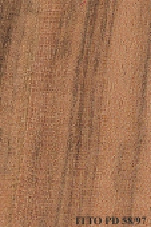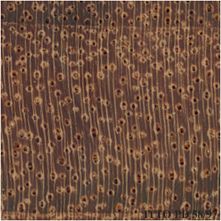
CURUPAY (Piptadenia grata)
Nombre comercial
Curupay
Nombre científico (con autor)
Piptadenia grata (Willd.) J.F. Macbr.
Familia
LEGUMINOSAE
Nombres Comunes
Angico preto (Brazil); Kurupau (Bolivia); Cebil moro (Argentina); Curupay (Argentina); Cebil colorado (Argentina); Angico vermelho (Brazil); Kurupa`y kuru (Paraguay); Kurupay (Paraguay); Kurupayra (Paraguay); Cebil (Argentina); Vilga (Perú); Tarahuilca (Perú); Algarrobo (Perú); Chocolatillo (Colombia); Vilco (Bolivia); Cebil (Bolivia); Curupau (Bolivia); Curupay Negro (Brazil); Dark Angico; Curupay (Brazil); Arapiraca (Brazil); Angico Preto Rajado (Brazil); Angico Preto (Brazil)
Nombres científicos sinónimos (con autores)
Piptadenia macrocarpa Benth.; Anadenanthera macrocarpa (Benth.) Brenan; Anadenanthera macrocarpa (Benth.) Brenan; Anadenanthera colubrina (Vell.) Brenan; Anadenanthera colubrina var. cebil (Griseb.) Reis; Acacia grata Willd.
DESCRIPCIÓN DEL ÁRBOL
Descripción botánica
It is reported to attain a height of 20 to 35 m, with a trunk diameter that can reach up to 100 cm, but more commonly 40 to 70 cm in diameter. Usually the tree develops an irregular stem, with commercial lengths of 15 to 20 m. The seeds are reported to h
Hábitat natural
Piptadenia grata is a fast growing species, typical in secondary forests where it is dominant. It prefers stony or sandy well drained sites. Piptadenia is reported to regrow from the stump.
Distribución natural
This species occurs in Brazil, Perú, Bolivia and Paraguay.
Usos No-maderables
The bark of this species is reported to have a high tannin content.
IDENTIFICACIÓN DE LA MADERA
Descripción anatómica de la madera
Wood diffuse porous. Vessels solitary and in short radial multiples. Tangential diameter of vessel lumina 100 micras or less (very small). Yellow-colored deposits in heartwood vessels. Vestured pits. Vessels per mm2 10 to 20 (abundant). Simple perforation plate Axial parenchyma in marginal or in seemingly marginal bands. Paratracheal axial parenchyma scanty and/or vasicentric. Axial parenchyma lozenge-aliform. Axial parenchyma confluent. Prismatic crystals in chambered axial parenchyma cells and/or in fibers. 4 to 10 rays per mm (medium). Rays 1 to 4 seriate. Homogeneous rays and/or sub-homogeneous rays (all ray cells procumbent). Non-septate fibers. Fibers very thick walled. Fibers with simple to minutely bordered pits.
-
 Foto macroscópica de la madera, plano tangencial
Foto macroscópica de la madera, plano tangencial
-
 Foto microscópica sección transversal de la madera
Foto microscópica sección transversal de la madera
Disponibilidad
Status de protección por CITES
Unrestricted
DESCRIPCIÓN GENERAL DE LA MADERA
Olor
It has no distinct odor or taste.
Color
The sapwood is yellowish light brown, the heartwood gradually changes into reddish brown.
Indice de Color (1= Negro, violeta; 7= Amarillo claro, blanco)
4
Grano
The grain is frequently interlocked.
Veta
The wood is frequently reported to be fine textured.
Brillo
This species has moderate to high luster.
Durabilidad Natural
P. grata is reported to be very durable, even in contact with the ground.
Indice de Durabilidad Natural (1=Muy alta, 7=Muy baja)
1
Dificultad para impregnar
It is very difficult to treat with preservatives.
PROPIEDADES FÍSICAS DE LA MADERA
Densidad Básica (Peso anhidro/Vol. saturado) (g/cm³)
0.90
Densidad seca al aire (Peso y volúmen CH12%) (g/cm³)
1.05
Contracción Tangencial Total (Saturado hasta anhidro) (%)
8.1
Contracción Radial Total (Saturado hasta anhidro) (%)
4.9
Defectos por secado
Ease of Drying: Drying is rapid. Drying Defects: Slight cupping but severe tendency to casehardening are reported.
Estabilidad Dimensional (Contracción Total Tangencial %/Contracción Total Radial %)
1.7
PROPIEDADES QUÍMICAS DE LA MADERA
PROPIEDADES MECÁNICAS DE LA MADERA
Resistencia a flexión (Módulo de ruptura) CH12% (kgf/cm²)
1890
Resistencia a la compresión paralela a la fibra CH12% (kgf/cm²)
886
TRABAJABILIDAD
Aserrado
Cutting is rated as difficult when the wood is dry, it is recommended to cut it while green.
Corte de chapa rotativa
It can be used for decorative veneer.
Chapa tranchada
It can be used for decorative veneer.
Maquinado general
Machining operations are rather difficult.
Cepillado
It is difficult to plane.
Moldurado
Molding of this species is reported to be difficult.
Clavado
Nailing properties are poor.
Acabado
It is easy to finish.
Facilidad para herramientas manuales
The wood responds poorly to hand tools.
Usos Reportados
USOS FINALES (RESUMEN)
EXTERIOR GENERAL, crossties, HOUSING GENERAL, beams, boards
EXTERIOR GENERAL
- 1 - Tabela de resultados de ensaios fisicos e mecanicos
Durmientes
- 8 - Maderas latinoamericas. III, Podocarpus standleyi ,Podocarpus oleifolius, Drims granadensis, Magnolia poasana y Didymopanax pittieri
VIVIENDA GENERAL
- 10 - Silica in Timbers
vigas
- 11 - Prospect: The wood database
Tablas
- 13 - Dry kiln schedules for commercial woods. Temperate and tropical. Section III. Latin American (Mexico, Central, and South America) Woods–Conventional Temperatures
Please Provide Information To View Producer Information